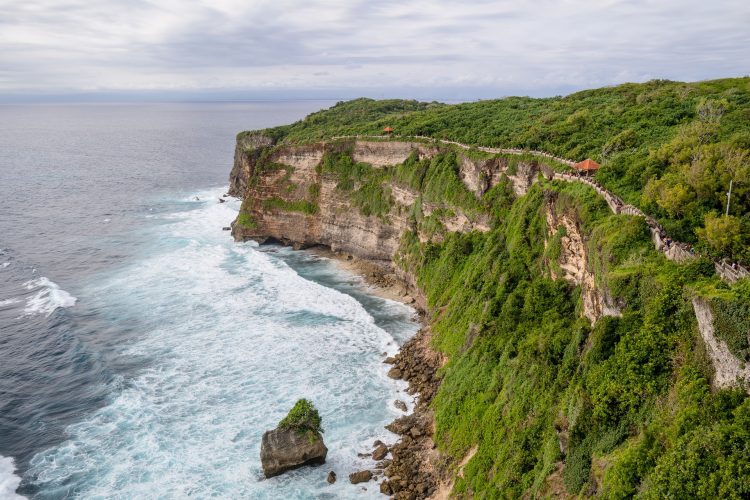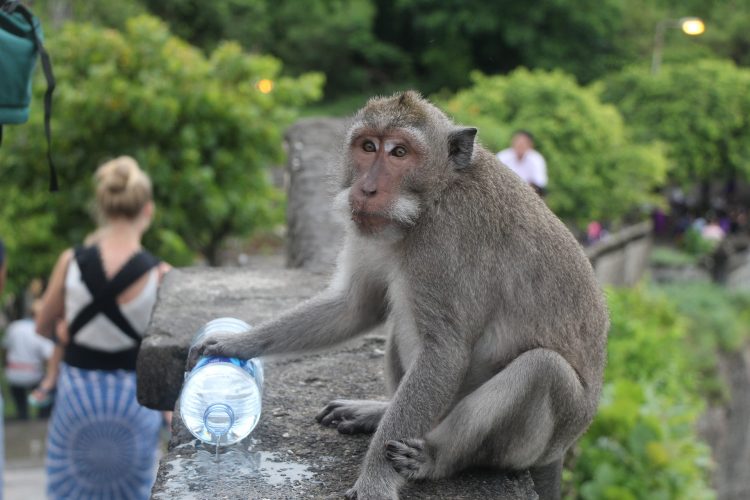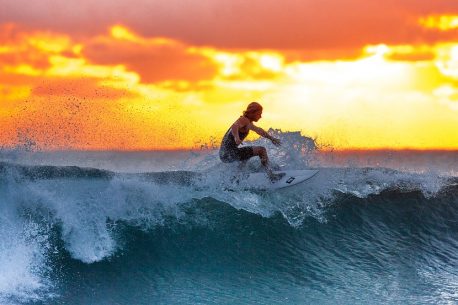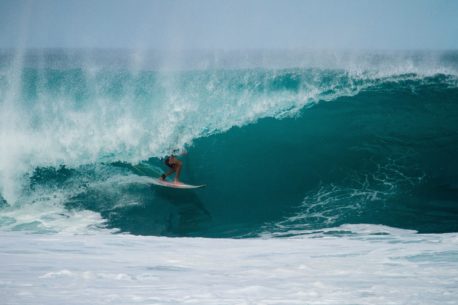
Indonesia is one of the most visited Asian countries by surf enthusiasts from all over the world.
Uluwatu, a popular surfing spot, is located on the southwestern tip of Bali’s Bukit Peninsula.
The site welcomes the Hindu temple Pura Luhur Uluwatu , one of the seven Balinese temples of the sea, built on the edge of a 70 meter high cliff overlooking the sea, in the most southwestern point of the peninsula and dedicated to the Vedic god Rudra.  The temple is inhabited by numerous monkeys , known for having fun snatching objects from visitors.
The temple is inhabited by numerous monkeys , known for having fun snatching objects from visitors.
Usually, they are persuaded to return the stolen goods in exchange for fruit, although all of this ultimately encourages these cunning animals to steal more than before.
As shown in the studies carried out by scientists and experts on the behavior of primates, it emerged that these monkeys, specifically of the macaque species, would learn the barter trade very quickly.  The locals strongly believe that the gods bless the surfers who come here to face the “divine and perfect” waves of Uluwatu.
The locals strongly believe that the gods bless the surfers who come here to face the “divine and perfect” waves of Uluwatu.
At the time, there were no roads leading to the beach, which meant that surfers had to carry all the necessary supplies with them.
if we retrace the history of Uluwatu, we can say that its fame began in 1972 , after the release of Morning of the Earth, a classic 1971 movie focused on surfing, which allowed this place to receive the immediate attention of surfers from all over the world.
Today Uluwatu is one of the most popular surf destinations in all of Bali.
Originally, the intent of the film was to show the waves around the island of Kuta, but after a few days of filming, they noticed the extraordinary beauty of Uluwatu.
The ocean here is characterized by strong currents, capable of producing large waves of 4.6 meters at low tide.
A true enchantment!

Indonesia is a country with a strong bond and a long tradition towards this fantastic discipline which is surfing. One of the first great surfers, who rode the waves of Kuta Beach on the island of Bali, was the American Bob Koke , during the mid until late 1930s. Due to World War II, Koke […]

Siargao is a teardrop-shaped island in the Philippine Sea located 800 kilometers southeast of Manila, in the province of Surigao del Norte. It extends for about 437 square kilometers and the east coast is relatively straight with a deep inlet, called Port Pilar. The coast is characterized by a succession of coral reefs and white […]